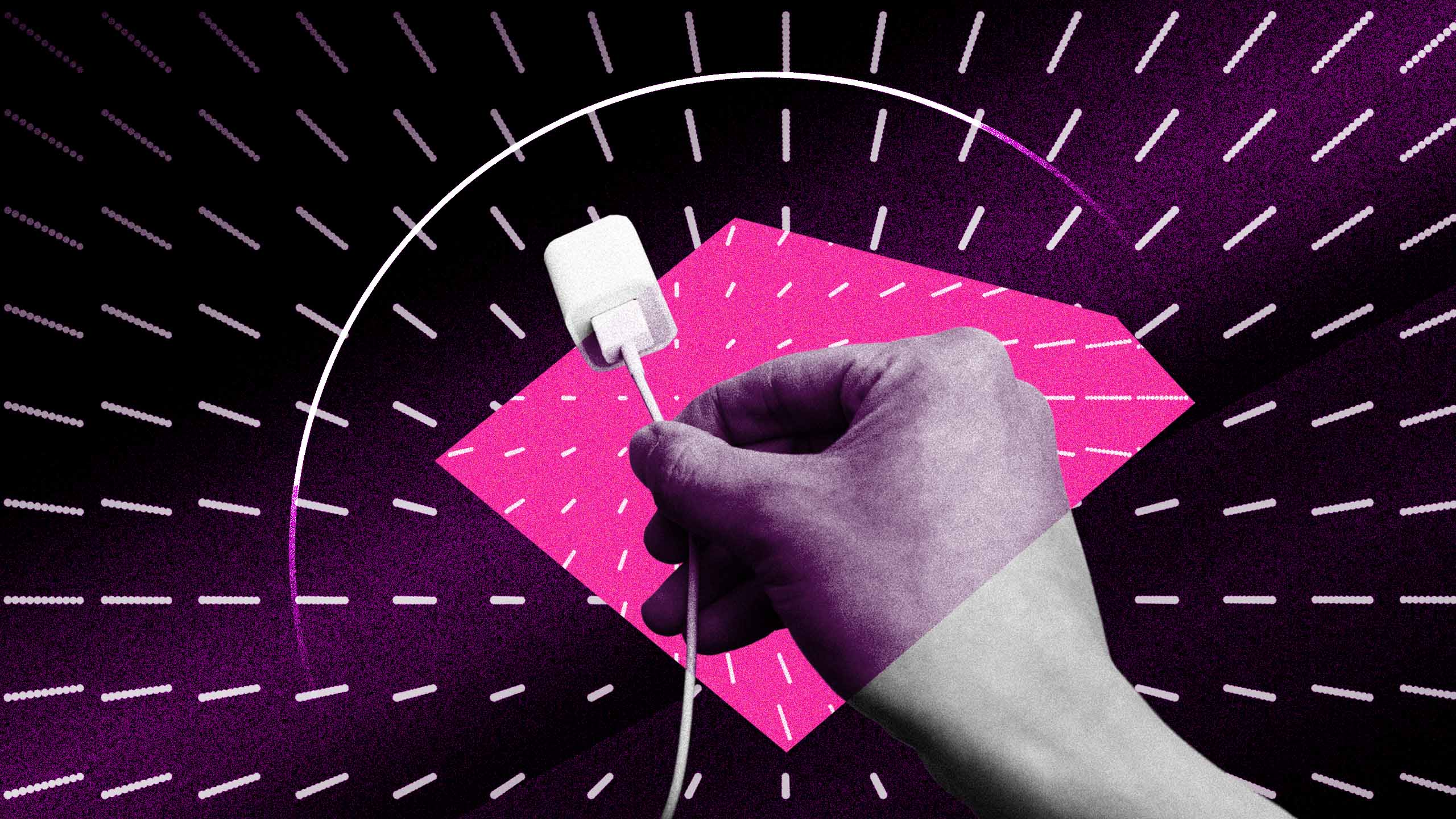Last month, I wrote for Xtra about the ongoing exodus that’s taking place as Twitter-turned-X users look for somewhere new to roost or, as the case may be, somewhere old to revisit—returning to platforms of their pasts. Inspired, I’d spent most of last month revisiting Tumblr, delighted to find that I hadn’t forgotten my old password and basking in a wave of nostalgia. Then, thanks to a colleague with an extra invite code, I finally took to Bluesky. Its similarities to the old Twitter allowed me to find my way around quickly, but it still seemed enjoyable—the act of once more building out a new network. Tumblr’s and Bluesky’s icons nestled into their new places on my home screen, new tabs in the half a dozen windows perpetually open on my desktop, and I was content. Then my fall semester began.
Emails with student queries, Slack notifications from coworkers and text messages from friends who had returned from a summer of distant workshops, conferences and teaching assignments arrived en masse. And as I waded through time-sensitive messages, sending off rushed replies, my phone—unsympathetic as it is—was none the wiser. Notifications from a dozen apps kept pushing me to log back on while my half-finished Bluesky account lurked in an abandoned window. I kept glancing at it, feeling guilty for leaving it unfinished and for ignoring new followers, and then—from out of the flurry of posts, tags and toots (I’ll always be grateful to Mastodon for that one)—a friend introduced me to digital minimalism.
An admission from the start: this is likely the most paradoxical bit of proselytizing that I’ve ever written. After all, I’m a digital studies professor writing in a digital magazine on the merits of digital minimalism. It might seem like a stretch, but hear me out. It’s not quite as contradictory as it might, at first, seem.
It might help to define what digital minimalism is, but in order to do that, it’s useful to first describe what it’s not. Digital minimalism is not a rejection of all technology. It’s not a dogmatic admonition telling you to log out, log off or shut down. And it’s not a one-size-fits-all approach to life onscreen. To the contrary, it’s likely to look very different for everyone; in fact, that’s kind of the point.
So, what is digital minimalism? For this, we ought to look to Cal Newport, who literally wrote the book on this subject. In his 2019 Digital Minimalism: Choosing a Focused Life in a Noisy World, Newport defines the titular term as “a philosophy of technology use in which you focus your online time on a small number of carefully selected and optimized activities that strongly support things you value, and then happily miss out on everything else.” In short, it’s one possible answer for those who, like me, are bogged down by emails, Slack notifications and their ilk.
While Newport’s work is fairly recent, conversations on how we might avoid becoming collateral in the attention economy’s fight for our time have been ongoing for years, leading to an entire genre of social media hacks and productivity-management tips—many of which we’re likely familiar with already. The effects of failing to stay afloat on this ever-rising tide of notifications is likely familiar to us as well, experienced viscerally as anxiety and stress. It was a topic that Dave Eggers addressed over a decade ago in his best-selling novel The Circle. Although a work of fiction, Eggers’s description of this digitally produced stress rings true, framed for the novel’s protagonist as a “black rip, this loud tear, within her.”
This sense of frustration is a widespread phenomenon, but it’s also one that queer and trans folks feel acutely. We’re more likely than our straight and cis peers to deal with anxiety and depression at some point in our lives—a difference that’s more pronounced for LGBTQ2S+ youth, according to a 2022 study conducted by the U.S. Census Bureau. How might pings and posts popping up at earlier and earlier stages in our lives be playing a role in shaping this statistic? After all, studies that date back to the very beginning of the web itself indicate that queer youth are early adopters, relying heavily on computer-mediated relationships in understanding self-identity.
It’s worth noting that this is often for good reason. The internet provides more than added anxiety; it’s a valuable resource for traditionally marginalized communities as well. But this is what separates digital minimalism from many of the other ongoing conversations around social media and time management. Digital minimalism doesn’t merely encourage us to cut down on the apps and screens that we use; it asks us to think about what our larger goals and ideals are, prompting us to concentrate on only the digital tools, platforms, blogs and so on that feed these larger objectives. It’s about making more focused, more intentional choices regarding where our time, energy and attention are going.
Newport clarifies these points, but he devotes little time to celebrating how our technologies have benefited us. Luckily, this topic has been widely addressed by other writers and activists. In the foreword to #HashtagActivism: Networks of Race and Gender Justice, for instance, Genie Lauren observes that our digital tools function as, “both a means to an end, a tool to consolidate information, and way to share a call to action, it is used to share examples of the injustice and oppression that users have experienced.” This is to say that a great deal of useful attention and change has been brought about by online activism and conversations surrounding hashtags like #BlackLivesMatter and #MeToo. Digital minimalism doesn’t undo this type of work; it doesn’t discourage these types of meaningful online activities. In fact, it might even allow us to do them more effectively.
Again, this isn’t a one-size-fits-all approach to the internet. Digital minimalism is different for everyone. For me, focusing on a small number of digital activities while happily missing out on the rest meant paring down the apps on my phone that no longer felt rewarding and weren’t necessary. Goodbye BeReal. Goodbye Reddit. (For the record, I’ll still use Reddit, but the desktop version will suffice.) It also means setting aside specific times to check my email so that I don’t default to checking it nonstop. I’ve turned off the notifications so that my rare moments of thrilling productivity aren’t interrupted by a message reminding me that I’ve left a book in my Amazon shopping cart. And it means setting aside time in the evening for leisurely pursuits I’ve ignored for far too long. Rather than my nightly scroll through Instagram, I’ve picked up a new cross-stitch project.
My partner—infected by my digital minimalism kick—is making changes of his own, but his looks drastically different from mine. He’s never been big on social media, but he can binge a Netflix show better than most. In order to reclaim agency over how he spends his time, he’s downloaded a daily habit tracker, simply called Productive, which markets itself as a way to “set reminders, reach your personal goals and stay motivated every day.” This works for him, and that’s what digital minimalism is all about—finding ways to better use the technologies we have access to, rather than simply becoming used by them.
For me, an audit of my online behaviour felt long overdue, and I admit to feeling surprisingly lighter with each app I delete from my phone and each unread newsletter I unsubscribe to. Digital minimalism is not a rejection of technology, but a reframing of it. Unlike Newport, I do still plan to scroll through my favourite Instagram accounts each morning (give me that dopamine hit of coming across a good queer reel!), but I think even he might approve of the intentionality behind this.


 Why you can trust Xtra
Why you can trust Xtra


